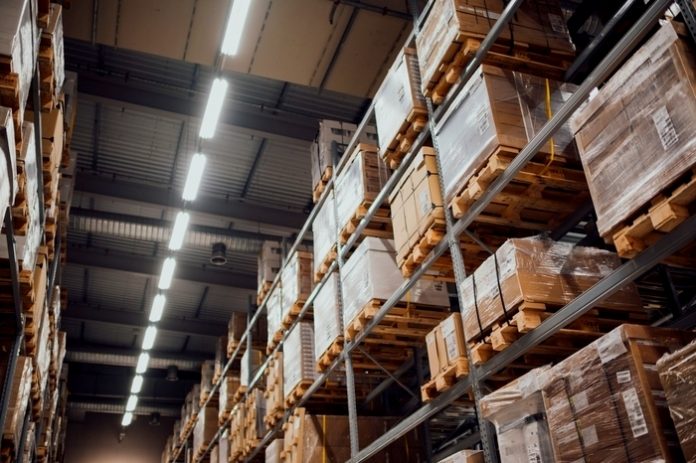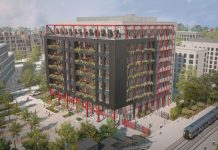Demand for large warehouse space (over 50,000 sq ft) was 37% higher than pre-COVID, with take-up in the 12 months since April 2020 of 64 million sq ft, an increase of 17.1 million sq ft on the equivalent period in 2019/20, according to Gerald Eve’s latest Prime Logistics bulletin.
Take-up in the first quarter of 2021 was 14.7 million sq ft, a dip on the record level seen in Q4 2020 but still 16% above the five-year quarterly average. Demand was once again driven by logistics operators and online retailers, between them accounting for two thirds of leased space. However, take-up was more diverse than during 2020, with improved showings from the manufacturing, green energy and TV/film production sectors.
The exceptional take-up over the past year drove availability to its lowest-ever level of 5.7% following five consecutive quarters of falls. Various occupiers are becoming concerned about the availability of appropriate space to accommodate their growth plans, contributing to further leasing activity as some tenants ‘stockpile’ space in anticipation of future requirements.
Josh Pater, partner at Gerald Eve, said: “The growth of online retail has been the defining real estate trend of the pandemic, but these figures put into sharp relief just how significant this shift has been. Leasing activity for large logistics space has been elevated for some time, but a surge in take-up of more than a third compared with pre-COVID underlines the scale of demand the market is supporting.
“Availability has moved in lockstep in the opposite direction, hitting just 5.7%, the lowest we have seen in the 15 years of our Prime Logistics research. In addition, the more diverse range of occupiers taking space in the latest quarter points to yet more sources of demand as the economy reopens over the course of this year, with availability looking set to maintain its low level for the foreseeable future.”
Development
At the end of Q1 2020 there was 37 million sq ft of space under construction across 137 individual schemes, with approximately a third of this floorspace being developed speculatively. Starts in the quarter were lower than in Q4 2020, but site acquisition and preparatory activity is surging: land for 11 million sq ft of space was acquired in Q1, and planning applications were submitted for a further 12 million sq ft, making it the most active quarter in more than four years.
Josh Pater continued: “As would be expected, the occupational demand seen in recent times is feeding through to the development market, and the rise in acquisitions and planning activity is a forward indicator of the level of new space we can expect to see being brought to the market in the months and years ahead. But as strong as development activity seems to be, buildings are letting quickly, and with availability at record lows there remains very little slack in the system.”
Investment
The weight of money targeting the industrial and logistics sector has increased substantially over the past year, with the buyer pool widening as investors have reallocated capital that was previously targeting other sectors such as retail and offices. However, with availability of stock remaining low, investment has been more muted than might be expected at around £2 billion during Q1. Portfolios were a key driver, accounting for 30% of all investment activity and helping to double the average lot size since the start of the pandemic to almost £30 million.
The dynamics of high demand and restricted supply have had a profound impact on capital values, with average prime yields moving in an additional 20 basis points in Q1 alone, and a hefty 63 basis points since the midpoint of 2020.
Will Strachan, partner at Gerald Eve, said: “With very few motivated sellers, outside of a handful of profit-takers seeking to recycle capital back into the sector, competition for investment-grade assets has been fierce, something that is reflected in the prominence of portfolio deals as market players seek to swiftly expand their exposure to the sector.
“The corollary of this competition has been a significant compression of yields over the past year and the occupational fundamentals continue to create a compelling investment story. As other property sectors show signs of stabilisation, and bond yields continue to increase as the recovery prospects brighten, the intensity of the downward pressure on yields is likely to ease, but industrial and logistics is again expected to be the sectoral outperformer in 2021.”
First produced in 2006, Gerald Eve’s Prime Logistics focuses solely on industrial warehouse properties of 50,000 sq ft or more in size.



















